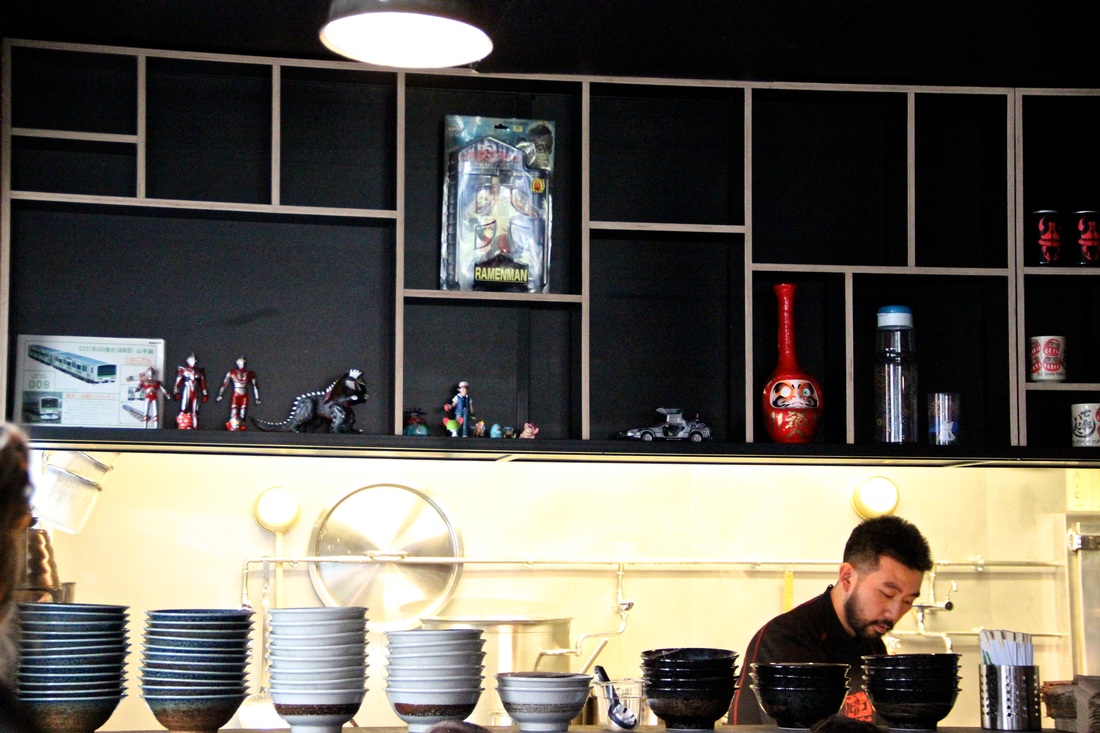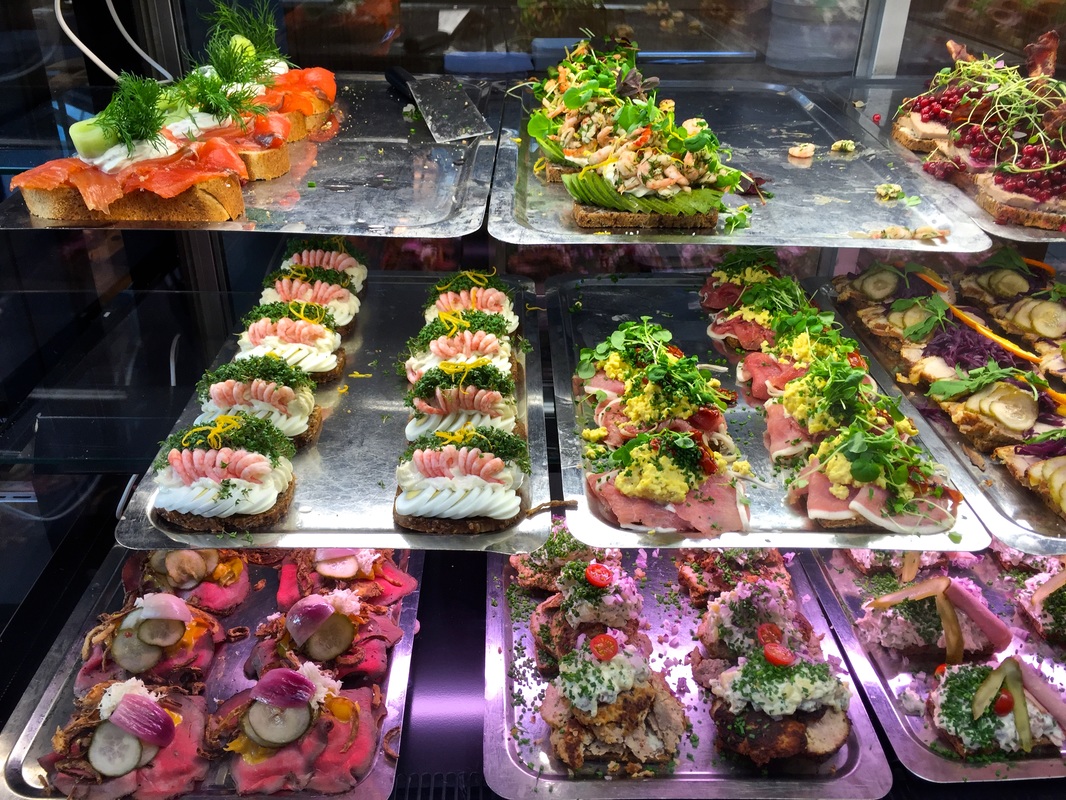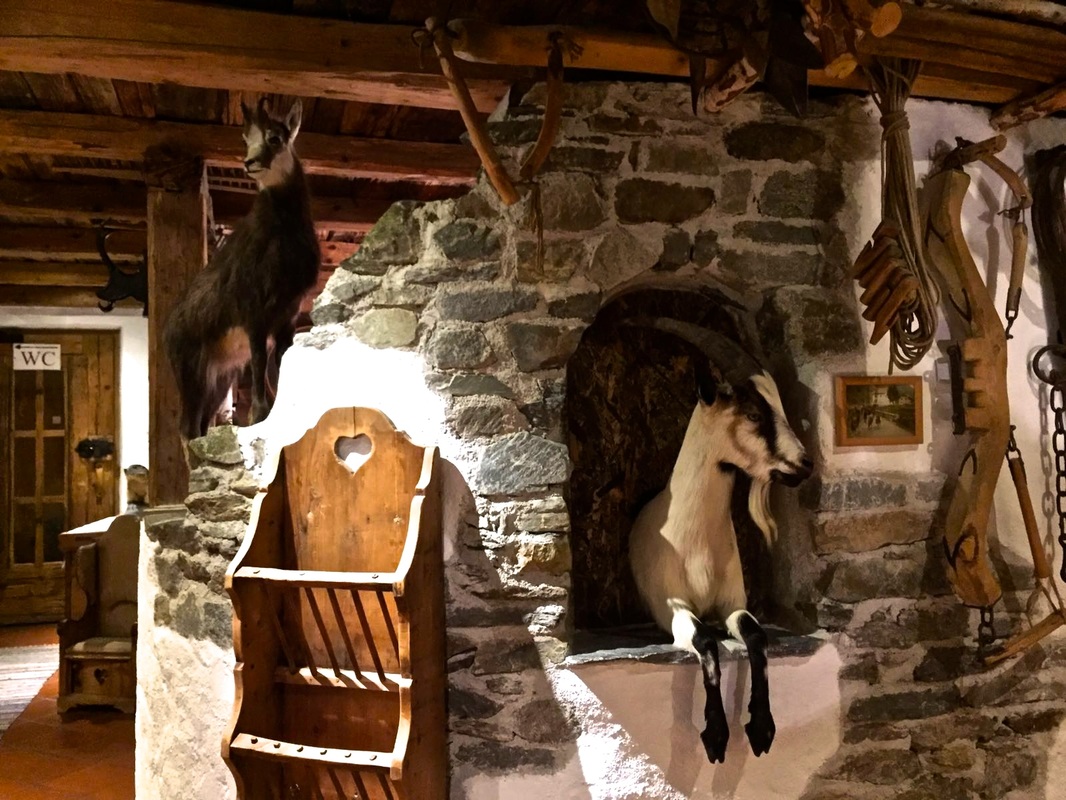|
Ramen To Bíiru's spicy miso number. Easily some of the best noodles I've eaten out of Asia. So you didn’t manage to snag a spot at the world’s most talked about restaurant. Maybe René Redzepi was in Tokyo, dazzling everyone with twitching prawns and live ants, or hosting a pop-up with a 27,000-person waiting list, which happens to be the case right now. Or maybe the restaurant was booked out for months, as is the case the rest of the time. Noma may no longer be San Pellegrino's No. 1 in the world (whatever that means), but that certainly hasn’t stopped people from lining up to try avant-garde dishes starring Nordic ingredients like sea buckthorn, musk-ox meat and Icelandic puffin eggs. It’s cool. I didn’t get in either. Noma may well be fantastic, but I will probably never know. The place isn’t long for this earth, which makes those few coveted tables even harder to come by. Fortunately, as I discovered on my recent visit, there are tons of other delicious things to eat in Copenhagen—including ones without a US$375 (plus wine pairing) price tag. A rare sunny winter afternoon. VesterbroA mix of slick eateries and bars in the west including Istedgade, the city’s small, but sleazy red light district. The Meatpacking District comes to life when the sun goes down and is your best bet for Saturday night. Try Jolene, a funky LGBTQ-friendly spot run by Icelandic DJs. Fiskebar Terrific seafood in a noisy, stylishly industrial space. Tasting menus are pricey, but a heaping order of cream-braised mussels with celiaric is tasty and affordable by Danish standards. Throw in a few oysters and the accompanying loaf of crusty bread with whipped butter and you’re set. WarPigs This rowdy craft beer hall is the perfect place to fuel up before heading to the surrounding clubs and bars in the Meatpacking District. No reservations are required (a rarity here)—just queue up for ribs, smoked brisket and pork shoulder. Our dry-rubbed ribs were slow-smoked and pretty perfect, the buffalo wings much less so. NørrebroA more recently gentrified district to the north, Nørrebro has stayed comparatively multicultural. Torvehallerne, a place full of wonderful things. Torvehallerne Copenhagen’s buzzy food hall is a terrific place for chi-chi smørrebrød, Spanish tapas, sushi, or whatever else you’re craving. Sadly, the team behind Hija de Sanchez, the popular taco joint launched by Noma’s former pastry chef, was off foraging for ingredients and inspiration in Mexico when I visited. BÆST Christian Pugliesi, Noma’s former sous-chef, has something of a culinary empire going. Restaurant Relæ, a Michelin-starred number also on the San Pellegrino list, is all about high-wire New Nordic tricks. This pizzeria keeps it casual, but still sticks to organic ingredients and makes its own bread, mozzarella, ricotta and charcuterie. To be honest, I wasn’t entirely sold on the crust, but the spicy, house-made ‘njuda was fantastic stuff. Looks like Tokyo, feels like Tokyo, tastes like Tokyo... but we're still in Copenhagen. Ramen To Bíiru A ramen shop run by a craft brewery sounded dangerously trendy, but the execution here is solid. The menu keeps it simple—choose between shio, shoyu and miso—and the broth is a fatty, collagen-rich wonder. Dishes are available in four different spice levels, with "3" being enough to make me break into a sweat. My chile-laced miso bowl came with a molten onsen egg and bits of tender pork belly bobbing on the surface. Like WarPigs, Mikkeller’s other offering on this list, there are no reservations. Just squeeze into the tiny space, press a button to order, and wait until someone shouts out your number in Japanese. Manfred’s Another hit by Christian Pugliese, this unpretentious bistro lets the vegetables take center stage without completely omitting the meat. The seven-course tasting menu of rustic, seasonal dishes like kohlrabi with cod roe, kale with walnuts and tangerines, shaved celery root with pistachios and rose, is one of the best deals in town. Not every dish is to everyone’s taste; my dining companion was less than thrilled by beetroot “fettuccine” in a black olive and two-year-old Parmigiano-Reggiano sauce or the slow-poached egg in Jerusalem artichoke cream with elderflower capers (elderflower buds pickled for a year, then fried), though I happened to like both. A couple dining nearby told us afterwards that the beer and rye bread porridge with ice cream was “literally one of the worst desserts I have eaten in my entire life.” I wimped out and went with the safe bet: chocolate mousse with a tart apple compote and salted chocolate crunch—hardly groundbreaking, but far more enjoyable. What I loved most about this place (aside from the bread, which is the same fantastic stuff served at BÆST) was how fun and unfussy everything was, despite the very high quality of the food. When we were leaving around 11pm, a birthday party was just kicking off with around 10 Danes laughing and shouting skål. Freetown Christiania A hippie community to the south decorated with funky graffiti and sculptures. Note: it’s all peace and love here… until someone pulls out a camera. Many of the wares sold here are illegal and residents don’t take too kindly to selfie-snapping tourists. Morgenstedet An institution in this little bohemian oasis, Morgenstedet has been serving homey vegetarian fare on mismatched plates for decades. Visitors can also purchase organic fruit and veggies by the kilo to take home. Stop for a chai tea latte and soak in the feel-good vibes. Strolling through the city center.
5 Comments
Notice how there's no one there? The day before we arrived, there were 20 people on the entire slope. The fact that it remains so blissfully uncrowded is a minor miracle. When I was a teenager, I joined a group of friends on a skiing expedition to Maine. While I’m convinced that my companions were born on an inclined plane with large pieces of plastic strapped to their feet, my own ski legs were of the more wobbly sort. After much goading, I boarded a cablecar to the top of a mountain that looked more and more forbidding the farther up we got. I stayed upright for a whopping total of 30 seconds before plunging into a ditch and being hauled down to the base by an irate instructor on one of those emergency sleds. No, I wasn’t hurt—just terrified and a bit sheepish. As someone who lacks coordination on non-slippery surfaces, I’ve always approached winter sports with what I consider to be a healthy fear of mortality. While others nimbly swish down triple-black diamonds, you’re more likely to see seven-year-olds whizzing past me on moderate trails. Even the drive in is stunning. Which is why I was more than a little on edge three years ago when I flew from Bangkok to Austria for my first attempt at downhill skiing in years. Living in a tropical climate, I had assumed I was safe from such madness. The chance for adventure though—one that would ultimately lead me to move to Europe for good a year later—outweighed any semblance of common sense. So I boarded a plane, arrived bleary-eyed and Bambi-legged at 7am in Munich, and drove straight for the Tyrolean Alps. A funny thing happened on that extended weekend: I loved it. Unlike the U.S.’s perpetually crowded slopes, Kaunertal rarely has more than a few hundred visitors spread over long, luxuriously broad runs. The snow is pure powder, the scenery is ruthlessly gorgeous, and the lines are nonexistent. From the highest point, you can straddle the Italian-Austrian with endless views of mountains in all directions. Best of all, at the end of the day, there’s nothing quite like a steaming mug of Glühwein—that magical alchemy of cheap wine, spices and sugar that’s so much more than the sum of its parts—to make you feel giddy and slightly delirious. A couple weeks ago, I was lucky enough to return to this very special place. I still cruise down the slopes a notch above granny-speed, but I couldn’t have enjoyed it more. Staring into the Italian Dolomites. Where to Eat and Stay A note of warning: if you’re looking for mounds of sugar-snow and cozy alpine villages, Kaunertal is perfect for you. If you’re hoping for a booming après-ski scene, celebrity spotting and fine dining, this might not be your jam. The nearby town of Feichten has some of the friendliest locals you’ll ever meet, but it’s pretty quiet after 6pm. During the high season (February-April), there is a modest après-ski tent with the requisite German Schlager and Zappa Dello, a local dive bar in the town of Feichten, gets a bit rowdy. The rest of the time, both the town and the slope offer a quieter sort of charm. For dinner, I’m particularly fond of the quirky restaurant at the Hotel Gletscherblick, where the owner cheerfully informs patrons that he shot their dinner with his own hands. The taxidermied goats and other animals only add to the deeply weird ambiance. Less eccentric is the restaurant at the Hotel Kirchenwirt, which offers both international and Austrian staples. Kaiserschmarrn (chopped-up pancake with fruit preserves that tastes much better than it sounds) isn’t on the menu, but the staff will happily whip it up upon request. As for where to stay, there are a number of lodges in town, but your best bet is to rent a Ferienwohnung (vacation home). Modern, spacious apartments with cedar and traditional alpine furnishings can be found for only €40-60 per night, versus more than €150 for a hotel. Nuts and BoltsGoing up in the morning. Day passes run from €31 in low-season to €37 in high. Depending on the weather conditions, the lifts run daily from 9am-4pm. The Kaunertal Glacier Road, the fifth highest paved road in the Alps, is scenic, but treacherous. If you’re planning on driving yourself, winter tires and four-wheel-drive are essential. For the less brave of heart, there’s a free shuttle service that makes the 45-minute ascent and descent. First run of the day.
|














 RSS Feed
RSS Feed